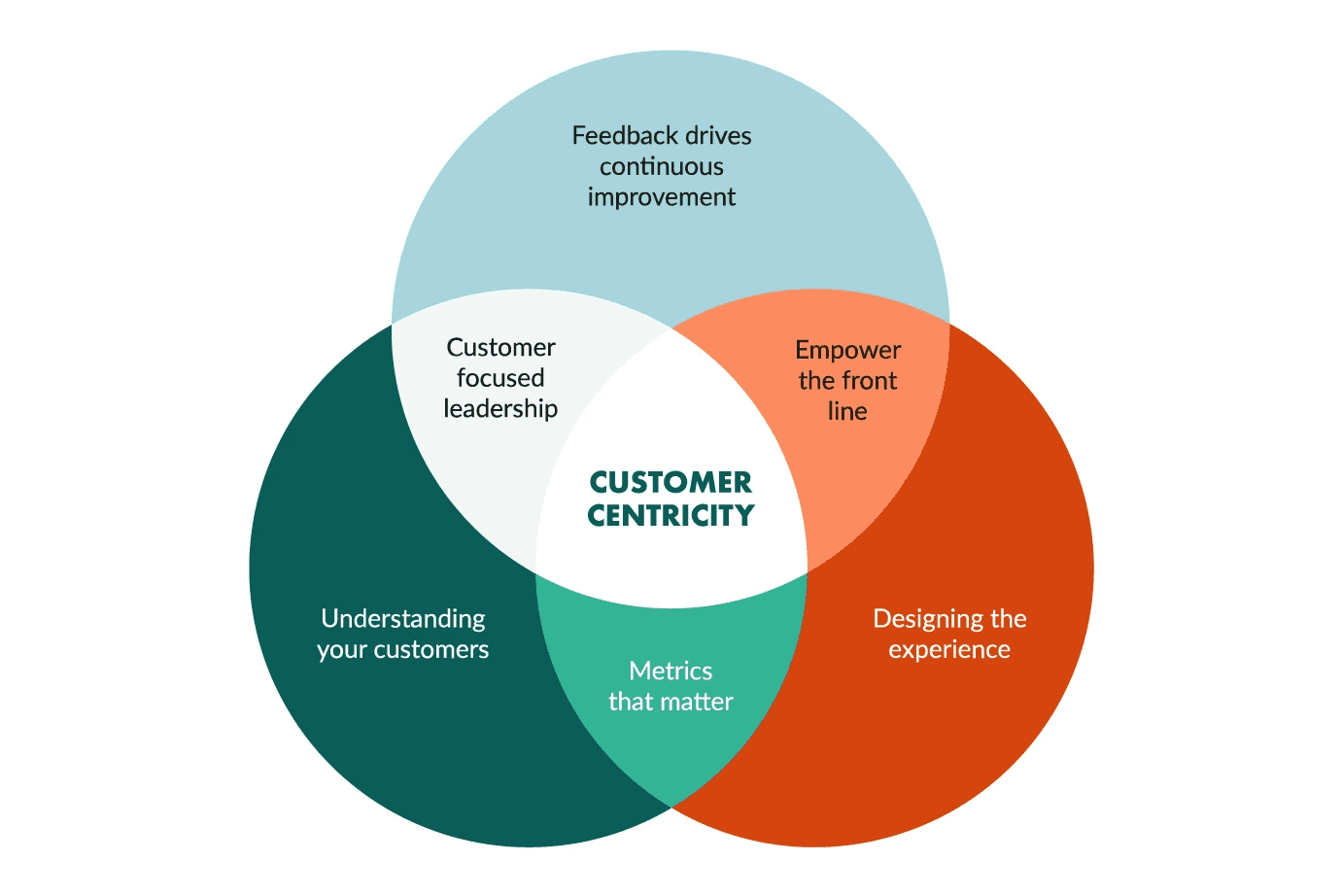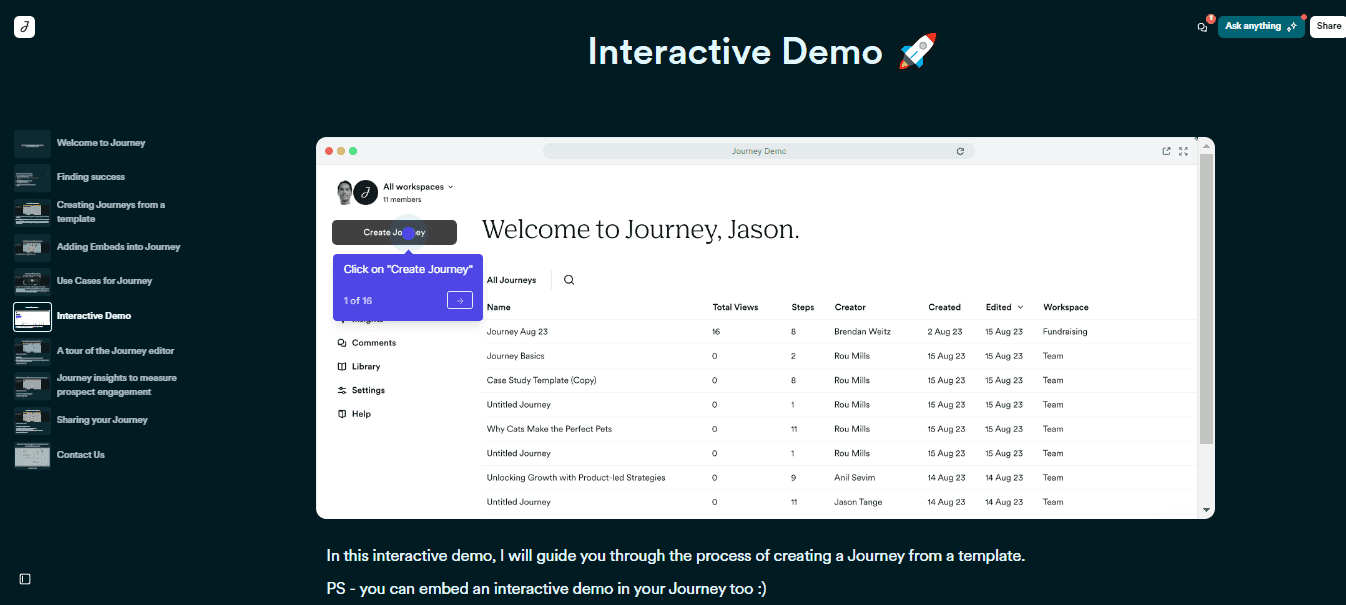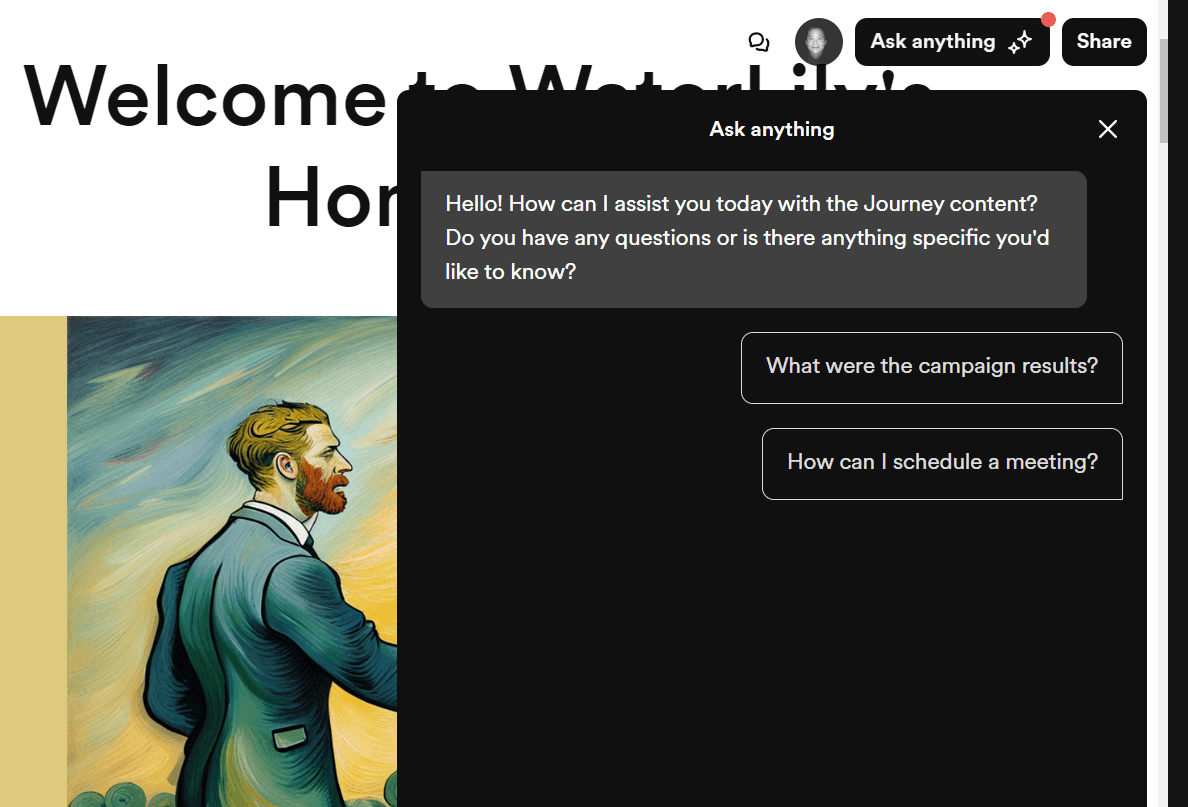April 18, 2024

The best way to sell something: don’t sell anything. Earn awareness, respect, and trust of those who might buy.” – Jordan Belfort, Wolf of Wall Street (2013)
I'm all for movie quotes, and I'm well aware that this one is probably a broken record by now – but it's also the gospel truth. It slices through pretentious B2B jargon and gets straight to the heart of genuine customer-centric selling.
Now, you might be skeptical, especially given the complexity of B2B sales cycles. While achieving Zappos-level customer obsession might not be feasible for everyone, there's tremendous value in prioritizing the customer in the B2B selling process.
After all, companies that embrace a customer-centric approach tend to see 4-8% higher profitability than their competitors. What’s more, 84% of businesses report increased revenue after improving their customer service processes. How would those numbers fit into your process?
The truth is, customer-centricity has been a winning strategy for decades, and it shows no signs of losing its edge in 2024 or beyond.
A Bit of Background in Customer-Centric Selling

The term "customer-centric selling" emphasizes how crucial it is to cater to customers’ needs, preferences, and experiences throughout the sales journey. Essentially, it's about making customer satisfaction the heart of your approach.
While it's hard to pinpoint the exact root of this term to one person, it's likely evolved over time through the collective wisdom of both sales and marketing professionals.
One notable figure often linked with the concept of customer-centric selling is Michael Bosworth. He's renowned for his book "Solution Selling: Creating Buyers in Difficult Selling Markets," published in 1994. While Bosworth's focus is on solution-oriented selling tactics, his principles closely align with customer-centric ideals by stressing the importance of understanding customer needs and tailoring solutions accordingly.
There are also other thought leaders like Neil Rackham (author of "SPIN Selling") and Jill Konrath (author of "Selling to Big Companies") who've played significant roles in shaping and popularizing customer-centric selling methods over time. Their insights have helped refine and spread the importance of putting customers first in sales strategies.
Why Customer-Centricity Keeps on Winning
Increased Customer Loyalty and Retention
By putting customers' needs and preferences first, you lay the foundation for robust, lasting relationships that drive up loyalty and retention rates by establishing genuine trust and rapport, not just throwing out a quick pitch to reel them in. With customer-centric selling, trust becomes the cornerstone of interactions, making customers more inclined to stick around for the long haul.
Differentiation and Competitive Advantage
Adopting a customer-centric approach sets the company apart from competitors (especially in B2B) and positions it as a trusted advisor, which is something we've discussed in The 6 Cutting-Edge Sales Trends in 2024. In a crowded marketplace, the ability to provide personalized solutions and exceptional service can be a powerful differentiator.
Higher Lifetime Customer Value
When done right, customer-centricity pays off in the long run by driving higher lifetime customer value. By focusing on building lasting relationships and delivering ongoing value, you can increase customer satisfaction, drive repeat business, and ultimately reach revenue and profitability goals.
Reduced Churn and More Referrals
When fewer customers leave, salespeople have more time to focus on nurturing existing relationships. This leads to higher satisfaction and loyalty among clients. Plus, positive referrals from happy customers boost the salesperson's credibility and bring in new business opportunities, keeping growth and success going strong.
Customers Prefer to Do Things Their Way, In Their Time
In a 2013 Zendesk survey, it was discovered that 67% of customers prefer self-service over speaking to a support agent. Another 2017 Aspect survey found that 73% of customers want to solve issues on their own. Imagine their level of independence 11 years later!
When customers help themselves, they move from browsing to being interested a lot faster. And for you, that means diving into meatier conversations instead of just covering the basics. Equipping customers with self-service tools empowers them to take charge of their own experiences and address issues on their own terms. This independence leads to greater satisfaction and a feeling of accomplishment.
Plus, self-service is available 24/7, so customers can access support whenever they need it, no matter where they are or what time it is. This kind of flexibility is especially valuable for businesses serving a global audience.
Not to mention, some customers appreciate the privacy that self-service channels offer. They can find information or resolve issues without having to interact with a support agent if they don't want to. This accessibility contributes to a positive customer experience and puts them in control of their interactions with your company.
That Said, B2B Sales Cycles Remain Tricky
At the heart of it, the complex web of B2B purchasing patterns and client relationships involving multiple stakeholders can pose a real challenge for salespeople. With so many players involved, it's tough to get a clear picture of what each stakeholder truly needs, wants, and struggles with.
This lack of clarity can seriously cramp your style when it comes to customizing solutions and experiences for each individual customer – something that's absolutely crucial in customer-centric selling. And if disagreements arise among these stakeholders (which they most likely will), that's just another rock in your shoe.
According to data from XM Institute by Qualtrics, another self-proclaimed customer-obsessed software company, B2B customer experience (CX) programs are immature. They wrote:
"We’ve found that B2B customers no longer just compare experiences against competitors; they expect providers to match the best of their consumer-based experiences. All of this has to be factored into how a B2B CX program is designed and managed."
When the majority of B2B organizations are in the early stages of CX maturity, it's clear that they may not yet have fully embraced a customer-centric mindset. Instead, they may be more focused on internal processes, product-centric strategies, or transactional relationships rather than building long-term, mutually beneficial partnerships with their customers.
Ideally, B2B companies would be ingraining CX practices into every facet of the business and fostering a culture where customer-centricity is second nature. Ideally.
But the world isn't that simple. There are things you have no control over, and that includes getting the whole company on board with a customer-obsessed approach. Although that would be nice, it isn't always doable.
And that's fine. After all, there's something you have full control over: your own customer-centric sales process.
How to Make Your Customers Self-Serve, Have a B2C-Like Customer Journey, and Trust You — Without Moving Mountains?
By taking a single small first step: replacing a hairball of narratives that get scattered across multiple files, emails, and sales collateral into a unified platform where users can craft compelling and coherent stories. All inside a storytelling-focused Digital Sales Room by Journey. You can just call it a "Journey" — some of our users are already using it as a verb!
Making things easier for you also means doubling the ease for them: you can effortlessly share your Journey with customers, partners, investors, and other stakeholders through a single link. This way, you can sway them all at once by consolidating everything in one location, from PDFs to Loom walkthroughs to Calendly links.
Aligning all aspects of your sales journey — such as pre-sales, post-sales follow-up, upselling, etc.— allows you to optimize your entire sales process more effectively. This optimization empowers your champions to successfully promote your product internally.
Make Their Lives Easier from the Very First Point of Contact
Make sure you're available wherever they choose to connect – whether it's LinkedIn, your website, or through a chatbot. Offer a range of communication channels, including email, phone, live chat, and social media platforms. This flexibility allows clients to pick the method that suits them best, making the interaction more convenient.
Ensure your contact details are easily accessible across all platforms. Make reaching out effortless by providing clear contact information and quick response times.
Change Your Concept of Demo
Get a demo now should translate to "Get an interactive demo first. Then, if you have any further questions, we'll be just a click away."
A demo you'd walk them through becomes a demo they'll walk themselves through. Because that's how 75% of them want it: a rep-less sales experience.
Here's what a nice, clean interactive demo looks like:

If they need more questions answered, that's when a human-to-human demo will definitely help. But only when strictly necessary.
Be There. Just...Be There. Even When Prospects Are Self-Servicing
Look at the image below. It's from one of the Journeys already created. Prospects can either ask AI to answer anything related to the Journey or chat with you in real time. It's their choice.
You read that right. They don't even have to scroll down if they don't want to. It's about making their lives unnecessarily easier.

Sold? The Sale Ain't Over Yet
Now, focus on how you can help brand-new clients get settled. As in, the five-star-Presidential-Suite settled.
Assist customers in the onboarding process to ensure a smooth transition from sales to implementation. This may involve training sessions, setting up accounts, and providing resources to help customers get started with the product or service.
These resources can include call recordings, product walkthroughs, documents, and anything they need in order to not have to resort to support. Support is awesome and should be on standby, but the more the team can do to let clients learn on their own terms, the better.

"Journey allows me to organize all sales-related materials with multiple stakeholders in a single page, rather than multiple email threads. This also makes it easier for prospect stakeholders to share information and get visibility into the project." Michael Evert – Journey User
Your Customers Will Always Teach You About Themselves...and Potential Customers
Asking for feedback from customers to gain insights into their experiences, preferences, and pain points will always be your best strategy. This information is where you find the gold that translates into better products and processes across the board.
This may involve monitoring usage metrics, analyzing performance data, and conducting surveys. But not just your run-of-the-mill surveys, as in a half-hearted NPS score. While those are definitely great data sources, they don't say much. Not on their own, at least.
That's why I'll always suggest booking time with customers to chat face-to-face about their objections and results, and to ask for feedback.
And, of course, cross-reference your customer data with even more unambiguous data: engagement with your Journey. They help you get visibility into what prospects are doing and offer timely, relevant support throughout the sales journey.

"The analytics provided also allow us to understand the client's path through each journey and adjust accordingly. This has been particularly useful when deciding the order of work for clients to review. Without the granularity of Journey's analytics, getting such a rounded picture of our onboarding experience from the client's perspective would not be possible." Heist Collective – Branding & Vision Strategy Studio for Startups and VCs
A Final, Unsolicited Pep Talk: See Yourself as More Than Just a Salesperson
Engaging in real thoughtful conversations, studying psychology, reading, and expanding horizons are all essential aspects of any sales approach. Especially when it comes to customer-centricity, they'll help you develop empathy, emotional intelligence, and ethical persuasion skills – all of which are crucial for effective communication and relationship-building.
By following the above, you'll be able to take the edge off of making the sale or getting the upsell. You’ll take your eyes off the prize for a minute and immerse yourself in the process – which is an even bigger source of power.
And That's How Long, Complicated B2B Sales Cycles Can Become That Much More Customer-Centric. With a Single Tool.
Just by using Journey as the focal point of your sales collateral, you could reach results like 8-figure deal-closing, 75x ROI, and closing deals at a 38% faster rate.
The only question is…

